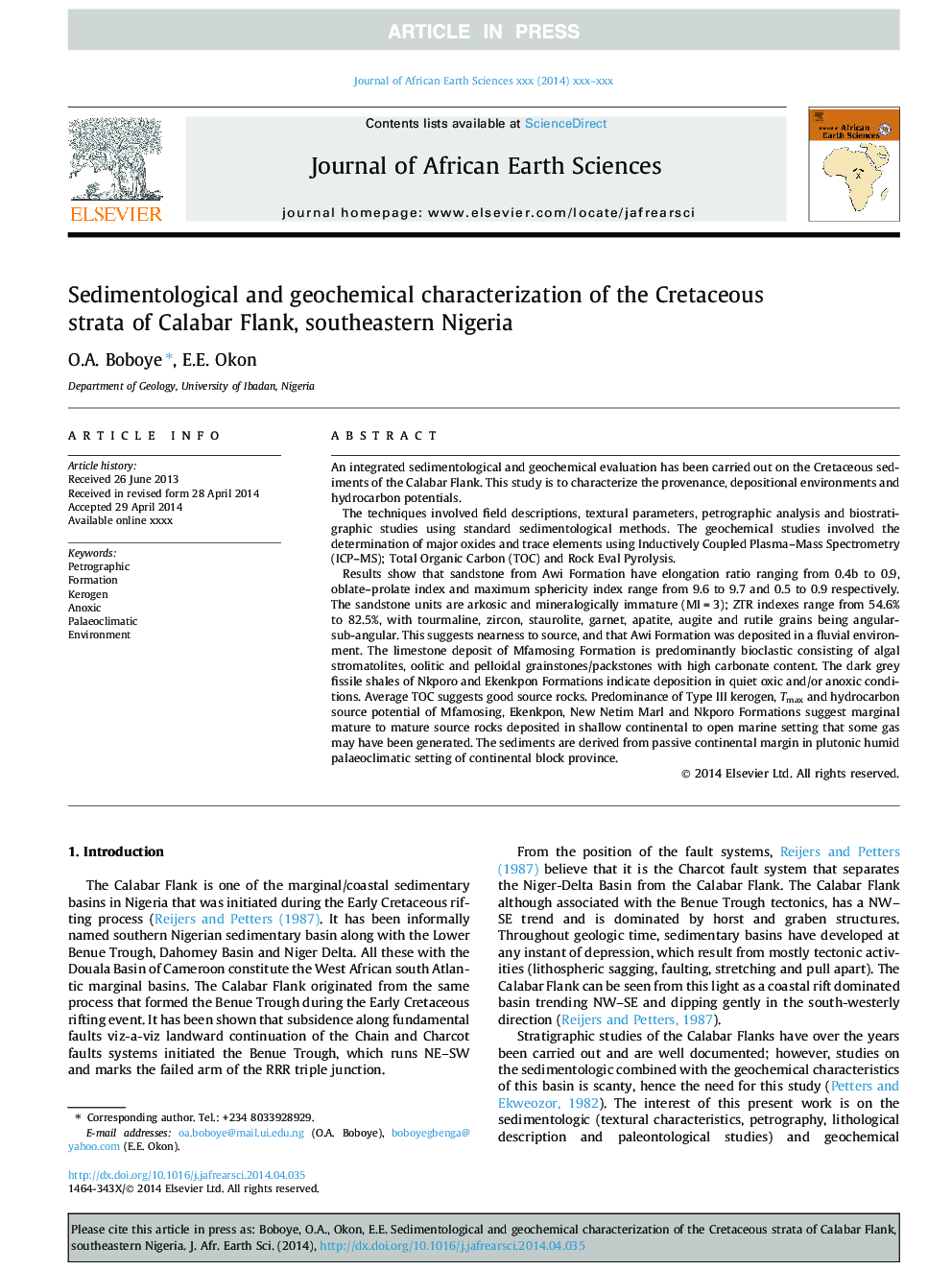| Article ID | Journal | Published Year | Pages | File Type |
|---|---|---|---|---|
| 6443855 | Journal of African Earth Sciences | 2014 | 15 Pages |
Abstract
Results show that sandstone from Awi Formation have elongation ratio ranging from 0.4b to 0.9, oblate-prolate index and maximum sphericity index range from 9.6 to 9.7 and 0.5 to 0.9 respectively. The sandstone units are arkosic and mineralogically immature (MIÂ =Â 3); ZTR indexes range from 54.6% to 82.5%, with tourmaline, zircon, staurolite, garnet, apatite, augite and rutile grains being angular-sub-angular. This suggests nearness to source, and that Awi Formation was deposited in a fluvial environment. The limestone deposit of Mfamosing Formation is predominantly bioclastic consisting of algal stromatolites, oolitic and pelloidal grainstones/packstones with high carbonate content. The dark grey fissile shales of Nkporo and Ekenkpon Formations indicate deposition in quiet oxic and/or anoxic conditions. Average TOC suggests good source rocks. Predominance of Type III kerogen, Tmax and hydrocarbon source potential of Mfamosing, Ekenkpon, New Netim Marl and Nkporo Formations suggest marginal mature to mature source rocks deposited in shallow continental to open marine setting that some gas may have been generated. The sediments are derived from passive continental margin in plutonic humid palaeoclimatic setting of continental block province.
Keywords
Related Topics
Physical Sciences and Engineering
Earth and Planetary Sciences
Geology
Authors
O.A. Boboye, E.E. Okon,
